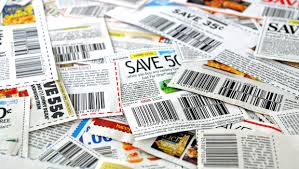Grocery shopping can be a challenge for anyone. There are many temptations in stores that make it easy to spend over your budget. Search Inc.’s Ignite participants have been working on building skills needed for greater independence, including how to be a smart shopper.
Here are their 7 tips to help you be a smarter shopper!
Tip #1 – Know Your Budget
It’s important to know your budget. You need to understand how much money you have to spend on groceries before you walk into a store.
Tip #2 – Take Inventory
When you are on a budget it’s important to focus on buying what you need. To help you do this, you should check your cupboards and refrigerator to see what you have and what is “missing.” You should then make a list of the products that you need to replace or will need in the near future. Using an inventory check list can be helpful with this task. Having a list of grocery products helps remind you of things you might otherwise forget. You will find lots of different formats of grocery inventory lists online, like this article that lists 5 different templates.
It’s important to think about what you need versus what you want. To check whether something is a want or a need, ask yourself: “Would I be in serious trouble without this?”
If the answer is yes, it’s a need; if the answer is no, it’s a want.
Tip #3 – Make a Meal Plan
Making a meal plan is helpful in planning what you need to buy and helps you stay within budget, too. Once you decide what meals you want to prepare, you should use your grocery check list to add any additional ingredients or products that you need.
Tip #4 – Do Your Research
Most of us have access to more than one grocery store and prices can be different from store to store. To find the most suitable place to shop, it’s helpful to compare prices between grocery stores. To do this you can look at flyers and coupons that you get in the mail or find in newspapers. You can also look at stores’ online advertisements and coupons for the best prices and for generic brands, which are usually cheaper than name brands.
Tip #5 – Treat Yourself!
It’s not realistic to only buy what you need and never buy something that you simply want. Budgeting doesn’t mean you can’t ever buy yourself a treat like pizza, French fries, candy, soda, or other snacks. But it’s good to think about what you can afford and figure out how much you are going to spend on a snack before you go shopping. You should also limit the amount of treats you buy and/or how often you buy a treat.
Tip #6 – Know the Tricks of the Store
There are a lot of temptations at the store, so it’s good to understand the layout of a grocery store. Healthy and fresh items, such as produce, meat, and dairy, tend to be on the outside aisles. Canned fruits and vegetables, boxed pasta, dry cereal and frozen meats, which tend to be cheaper, are on the inside aisles. But even in the inside aisles, you should be aware of the “eye level rule” when looking at a shelf. The more expensive name brands are usually placed at eye level. Bargain and generic items that will save you money are on the lower level.
Tip #7 – Stay away from debt
When paying for your groceries, try to use only cash or debit! That way you only spend the amount you have on hand or the amount that’s on your debit card. Cash and debit are direct payments. This means once you pay, you’re done and you don’t owe anyone.
Credit cards are convenient, but they allow you to spend more than you have. When you use a credit card, you are borrowing money from a bank. You have to pay the bank back. If you can’t or don’t pay the bank back in time, you will be charged interest. This is an added expense that will add up fast. You could end up owing way more than you actually spent on groceries.







No Comments
No comments yet.